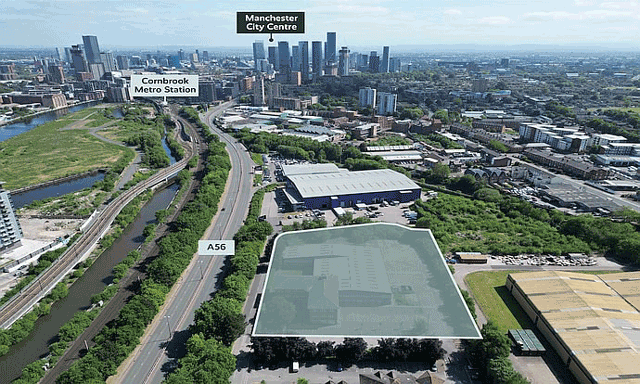The East Midlands office market is focused on Nottingham. The rest of the region might hate to admit it, but the volume of recent deals in the city shows it has attracted most of the activity in the area.
“If you look at what we have done in Nottingham in the first half of 2011, it compares with anything achieved in bigger cities like Leeds or Birmingham,” says Jones Lang LaSalle partner Matthew Smith. “Admittedly, the market is now being driven by local lease events rather than relocations, but they have put us above a five-year average.”
In the first half of 2011, Nottingham secured a trio of chunky transactions, as law firm Browne Jacobson and the Nottinghamshire Building Society signed up for 59,000 sq ft and 27,000 sq ft, respectively, in former HM Revenue & Customs buildings Mowbray House and Huntingdon Court, and patent attorney Potter Clarkson took 45,000 sq ft at the former headquarters of the Government Office for the East Midlands.
The Browne Jacobson deal, in particular, has achieved a high profile in Nottingham, partly because it was one of the biggest provincial deals in the first half of 2011, but also because it followed a series of earlier transactions, such as E.On’s new 105,000 sq ft offices and Speedo’s move to Miller Birch’s out-of-town NG2 development, showing that the city can cut it even in difficult times.
Yet that latest deal, handled by Geo Hallam & Sons, nearly did not happen. Browne Jacobson managing partner Iain Blatherwick says: “We had planned a move from our Victorian buildings, which have four different leases, were not suited to our purposes and didn’t have the image we wanted to present. But we decided we would stay put when the world went mad in 2008.
“But in spring last year, we discovered Mowbray House had come onto the market. It is an iconic building, still in the corporate centre, allowing us to have coffees and catch up with clients. Why wouldn’t you?”
Quieter second half
Nottingham shifted some 223,000 sq ft of space in the first half of the year, although pundits expect the second half to be quieter. But with E.On’s nine-storey offices rising on the skyline, occupiers such as Coca-Cola and Deloitte scouting the city with active requirements, and a gaggle of recruitment agencies keen to move into the centre, it is easy to see why Nottingham’s property people have a sanguine view of life.
But there are growing concerns about Nottingham’s continuing ability to offer quality space, with little more than a year’s supply of grade A left.
Apart from the mixed-use Southreef scheme, which went into administration in July, there has been little major spec build in the city for years. Southreef has only 27,000 sq ft left, and planning permission for phase II of the project, which would have brought 87,000 sq ft of offices, will soon expire.
“Spec development isn’t available,” says Innes England’s Chris Sinclair, agent on Southreef. “Even though there is demand, developers don’t want to take the risk without a strong prelet. But Nottingham is dominated by occupiers looking for less than 10,000 sq ft at £15 per sq ft, while developers are looking for at least £19-£20.”
The city has no shortage of potential developments. Bowbridge has permission to build and refurb 67,000 sq ft of grade A office at Trivett Square in the historic Lace Market area. But plenty of other ambitious office projects, which together would bring 600,000 sq ft of badly needed space, are stalled, such as Wilson Bowden’s Sentinel; awaiting a big prelet, like Peel Land’s Unity Square; or still at an early planning stage, like Oakhill’s London Road project. Meanwhile, Roxylight’s already heavily delayed Eastside regeneration, set to bring 1.4m sq ft of offices, was knocked back again over the summer as Tesco withdrew its plans for a keystone superstore in the face of planners’ opposition.
Derby
“You have more chance of finding a live dodo than grade A space in Derby,” says Russell Rigby, director at Derby agent Rigby & Co. “There is none available because Pride Park is now nearly full, while no one has touched the city centre for two decades.”
Derby’s dilemma is that the 200-acre Pride Park has been such a success, drawing in occupiers that might have stimulated development in the nearby city centre. But as developer Cedar House concludes its last project in the park – the 40,000 sq ft Point Office Village, already three-quarters full – interest is growing in the city centre’s potential.
There is pent-up demand from professional services businesses that want to remain in the city centre and occupants of Pride Park’s more mature buildings, now coming up to 15 years old. Meanwhile, Derby city council has taken almost 100,000 sq ft of what little grade B was free by occupying Friargate for three years while its city offices undergo a major extension.
“It’s like one of those arcade games where you’re waiting for the pennies to tumble over the edge,” says Rigby. “The main multi-let properties in the centre are full, or as good as, and now there’s a stand-off as to who will get in there first. There is demand, but Derby doesn’t have vast floors of space available.”
Leicester
Similarly, central Leicester is quickly running out of quality space. Loan Direct’s opportunistic move into 24,000 sq ft at the Carlton Square development, the biggest deal in Leicester in 20 years, took much of what little quality space remained in the city centre.
Although Leicester has plenty of grade B left, most of it is far from the railway station, the hub of the business district, and few expect the market to be strong enough to generate major refurbs or prelets for some time.
Northampton
Northampton offers some of the region’s most immediate opportunities. The town is dominated by deals below 5,000 sq ft, and has, at best, 35,000 sq ft of grade A available, almost all of it out of town and which could be reduced if 12,000 sq ft under offer at Point 15 goes ahead.
However, next spring Northampton will have a further 100,000 sq ft of good grade B to dispose of when National Grid quits its office block in the Lakes.
Lambert Smith Hampton director Ian Leather says this is an opportunity rather than a dilemma because it gives Northampton an immediate opportunity ahead of its East Midlands rivals to attract large external occupiers.
Also, the town has a new enterprise zone around its Waterside area, and German fund Garbe will be investing £12m in infrastructure work on 20 acres of land beside Avon’s landmark headquarters.











